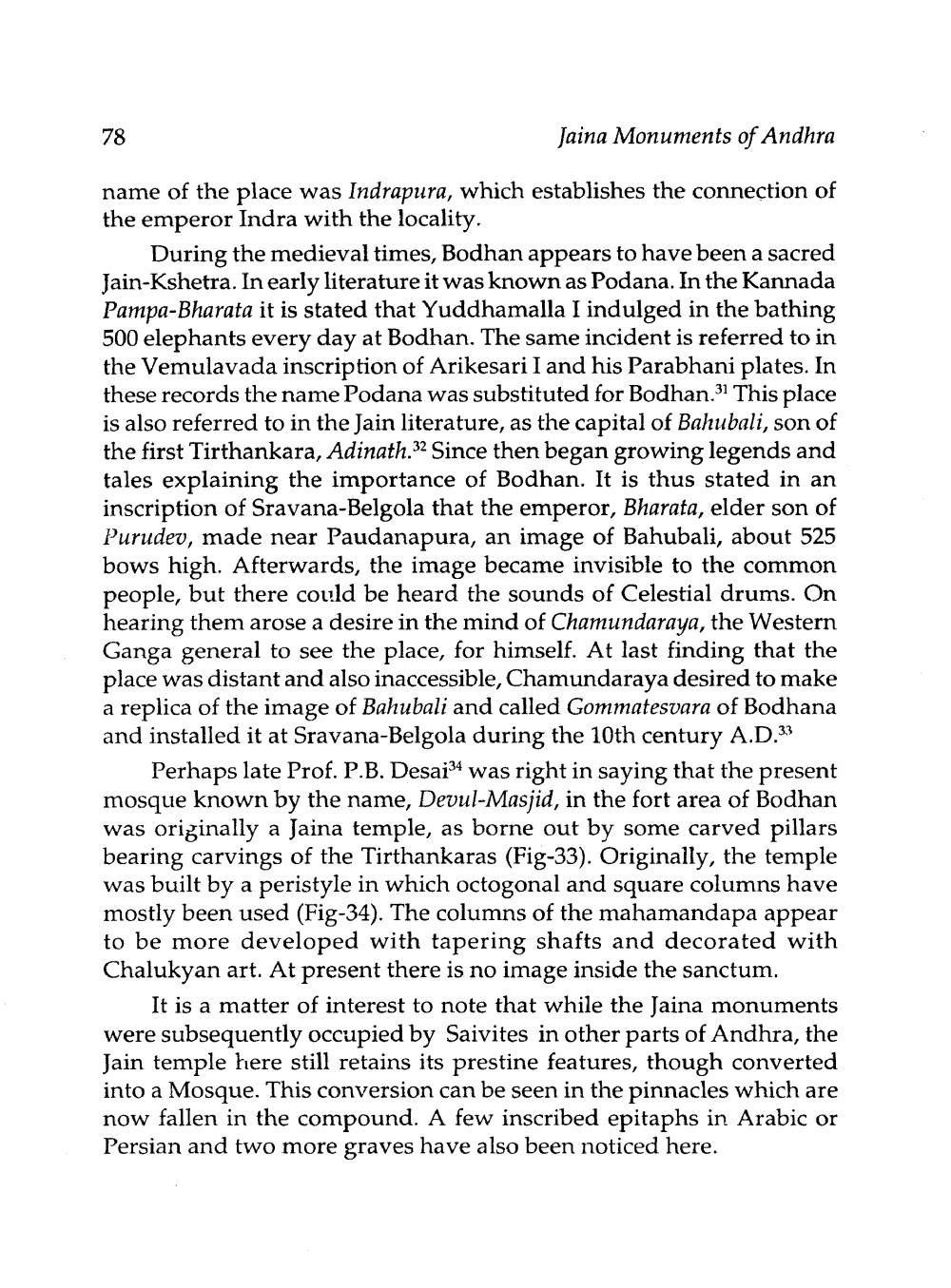________________
78
Jaina Monuments of Andhra
name of the place was Indrapura, which establishes the connection of the emperor Indra with the locality.
During the medieval times, Bodhan appears to have been a sacred Jain-Kshetra. In early literature it was known as Podana. In the Kannada Pampa-Bharata it is stated that Yuddhamalla I indulged in the bathing 500 elephants every day at Bodhan. The same incident is referred to in the Vemulavada inscription of Arikesari I and his Parabhani plates. In these records the name Podana was substituted for Bodhan.31 This place is also referred to in the Jain literature, as the capital of Bahubali, son of the first Tirthankara, Adinath.32 Since then began growing legends and tales explaining the importance of Bodhan. It is thus stated in an inscription of Sravana-Belgola that the emperor, Bharata, elder son of Purudev, made near Paudanapura, an image of Bahubali, about 525 bows high. Afterwards, the image became invisible to the common people, but there could be heard the sounds of Celestial drums. On hearing them arose a desire in the mind of Chamundaraya, the Western Ganga general to see the place, for himself. At last finding that the place was distant and also inaccessible, Chamundaraya desired to make a replica of the image of Bahubali and called Gommatesvara of Bodhana and installed it at Sravana-Belgola during the 10th century A.D.33
Perhaps late Prof. P.B. Desai34 was right in saying that the present mosque known by the name, Devul-Masjid, in the fort area of Bodhan was originally a Jaina temple, as borne out by some carved pilla bearing carvings of the Tirthankaras (Fig-33). Originally, the temple was built by a peristyle in which octogonal and square columns have mostly been used (Fig-34). The columns of the mahamandapa appear to be more developed with tapering shafts and decorated with Chalukyan art. At present there is no image inside the sanctum.
It is a matter of interest to note that while the Jaina monuments were subsequently occupied by Saivites in other parts of Andhra, the Jain temple here still retains its prestine features, though converted into a Mosque. This conversion can be seen in the pinnacles which are now fallen in the compound. A few inscribed epitaphs in Arabic or Persian and two more graves have also been noticed here.




